Letters from Lodi
An insightful and objective look at viticulture and winemaking from the Lodi
Appellation and the growers and vintners behind these crafts. Told from the
perspective of multi-award winning wine journalist, Randy Caparoso.
Is the wine industry effectively communicating with Gen Z consumers? (Part 2 of Sobering thoughts at the start of 2025)
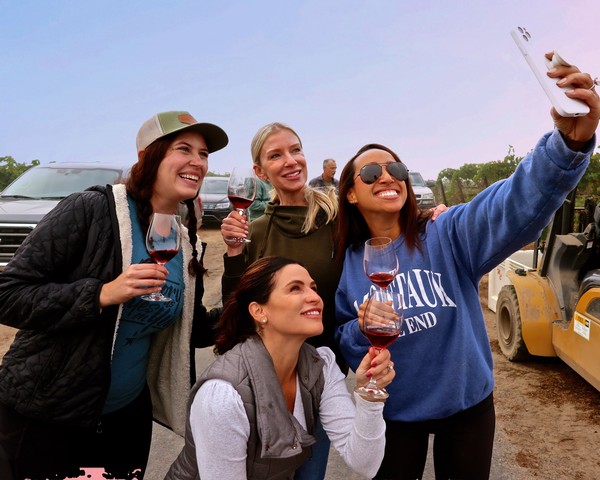
Visiting wine influencers preserving the moment in Lodi's Abba Vineyard.
Part 2 of Sobering thoughts at the start of 2025⏤The state of the American wine industry
Since overall wine consumption began showing a statistical decline in 2022, all eyes have been on the youngest segment of demographic cohorts, identified as Generation Z, born between 1997 and 2012.
The general feeling, based on market research, is that the latest generation of consumers, who first came of legal drinking age in 2018, have not been holding up their end.
For Boomers, still identified as the largest volume consumers of wine, the idea of consumers in their early to mid-20s not being entirely enthusiastic about wine comes as no surprise. Even the youngest Boomers, now in their early 60s, can well remember what they used to drink in their early 20s: Either no wine at all, or tutti-fruity commercial products such as Blue Nun, Lancers and Riunite. If they drank "California" at all, it was jug wines such as E. & J. Gallo Hearty Burgundy or Chablis Blanc.
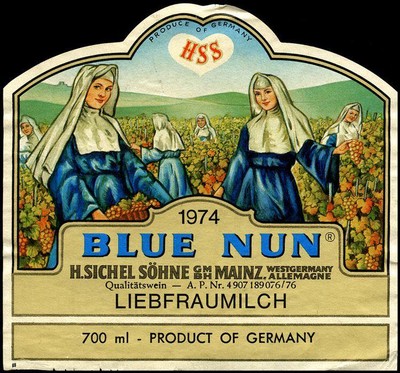
The wine many Boomers drank in the early 20s (during the 1960s and '70s): Medium sweet Blue Nun Liebfraumilch ("Holy Mother's Milk") from Germany.
Most Boomers were not introduced to the glories of California wine, which still accounts for some 60% of all wine (including imports) sold in the U.S., until the mid-1980s, when fruity White Zinfandel became all the rage. They "discovered" Chardonnay about the same time, when varietal bottlings suddenly popped up at grocery store lines for $4.99 or $5.99.
Back then, there was nothing mysterious about these "fighting varietals," as the wine industry called them. Medium sweet White Zinfandel tasted like fresh, perky watermelon/strawberry, with the satisfaction of a little more alcohol than the fruit flavored wine coolers that were popular in the early '80s. Commercial California Chardonnay was soft, more or less dry or off-dry, and buttery or creamy smooth with lots of apple/pineapple-like flavor.
In other words, when Baby Boomers were in their early 20s or 30s, they were not exactly "connoisseurs" of the finest wines, but one thing always leads to another. By the 1990s, when retail stores began merchandising wines with 100-point scores⏤strongly suggesting, simply put, that the higher the score, the more bang for the buck⏤many Americans developed a taste for richer tasting, fuller bodied wines, especially those from California, and they knew that the more they spent, the richer tasting the wine.
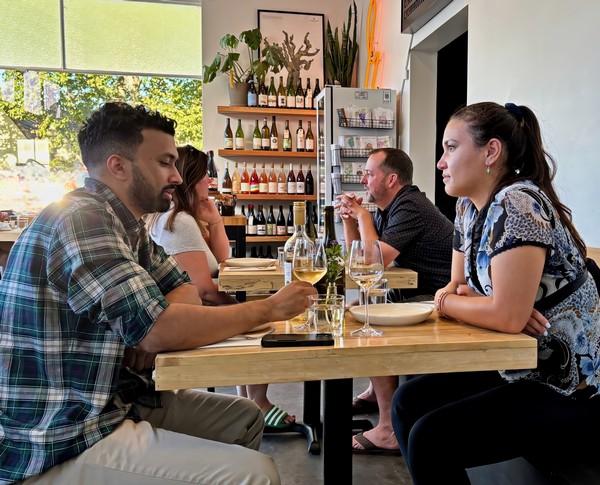
Guests enjoying the "alternative" wine selection at Lodi's Guantonios Wood Fired.
Yet even today, wineries selling at their door know which consumers are most likely to buy a full case of a wine, rather than just one or two bottles. These are the same consumers who order $100 bottles in restaurants without batting an eye: Customers in their late 30s or early 40s at the youngest. In this case, interest in large quantities or more expensive wine has nothing to do with generational spending habits. It has everything to do with disposable income, which most Americans do not attain until they are settled down in their jobs in their late 30s or early 40s.
Which is to say: Let's cut today's Gen Z consumers a little slack. They are not there yet, and are no different than previous generations in their early 20s. Yet this does not seem to keep many wine industry pundits from dumping on Zs, as if they're expected to go all in on $100 Cabernet Sauvignons like everyone else.
Is it "elitism" that turns off young consumers?
Over the past year one of the most talked about working theories on why 20-somethings are not jumping whole-heartedly into wine is the perceived elitism of wine appreciation itself. It is true that Generation Z, weaned on the World Wide Web and social media pumped into their veins like Holy Mother's Milk, are known to question societal standards and rules because they have always been accustomed to sourcing information and making up their own minds about things. But how is this applicable to wine appreciation?

Visting sommeliers at Lodi's Michael David Winery.
Recently, on the Tim Atkin page, a wine educator named Charlie Leary opined that one of the barriers is the culture of wine appreciation itself; saying, "If we continue to promote a 'right way' and a 'wrong way' of drinking wine, the industry will be alienating a large number of consumers."
Leary also quotes longtime American Master of Wine Tim Hanni, who says: "The wine industry continues to perpetuate a sense of exclusivity by emphasizing recycled values and concepts that associate wine with elitism, social status and sophistication. This approach has resulted in the alienation of potential consumers who feel intimidated or unwelcome."
Adds Hanni, "It is the industry's language, rituals, wine and food pairing conventions, and the heavy emphasis on wine education that have further contributed to this exclusion."
I puzzle over these observations. Mostly because, as Americans of all the previous generations have already experienced, there have always been rituals, a unique language, and associations with social status and sophistication attached to appreciation of, say, "fine wine." This has never prevented older generations from fully enjoying the ins and outs of wine, once they've attained the necessary income to buy more freely.
Put it another way: The presumed "exclusivity" of traditional wine appreciation has not keep the American wine industry from growing, since 2022, into a $100 billion-plus industry (re BMO Report, Gomberg-Fredrickson & Thach). Wine revenue in the U.S., in fact, is now more than double that of the world's major wine producing countries, such as France and Italy (re Statista, 2024). If Americans are intimidated by wine, they have a funny way of showing it.

Tegan Passalacqua (Turley winemaker/Sandlands owner/winemaker) pouring over a dozen of his Lodi grown wines for visiting scholars.
One could argue, in fact, that it is precisely the rituals, the wine and food pairing conventions, and the special language associated with wine that have made it such a compelling alcoholic beverage for well over a thousand years.
Generation Z may have grown up with slightly different social values than previous generations, but that doesn't make them any less capable of overcoming these perceived barriers. If anything, the latest generation of adult beverage consumers is a lot smarter, and better equipped, than previous generations because of their innate ability to access information with ease, and there is more information than ever available to everyone.
If, however, many young consumers are turned off by traditional wine culture, most likely it is because they choose to be turned off⏤not because they are incapable of grasping anything having to do with wine. Which begs the questions: Why, and what are the remedies?
At what point does wine communication go from hindrance to help?
In recent months we have been turning to Anna Delgado, a 20-something wine enthusiast who walks the floor at the Lodi Wine Visitor Center communicating directly with consumers of all ages, both local and vistors from everywhere, all day long. Our thinking is this: If we're wondering why the latest generation is not into wine as much as we'd like them to be, why not ask a Gen Z wine professional why that might be?
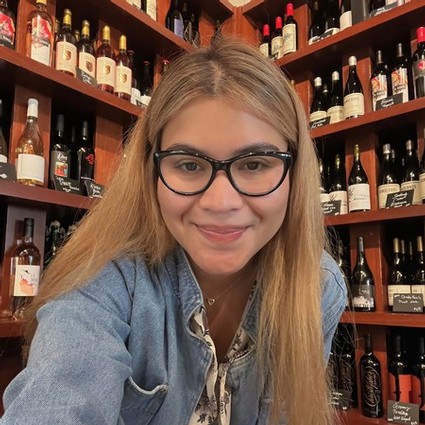
Anna Delgado, Lodi Wine Visitor Center.
The first thing Delgado says is this: "Part of the struggle is the stuffiness of wine language. When you use technical jargon, you lose a crowd. Yet when you forgo wine language, you're left with inane fluff."
Therefore, says Delgado, it is not wine language and communication that are the issues, it's the failure to find intersecting points of interest with younger generation consumers. "Young people are not incapable of learning wine terminology," contends Delgado; bur rather, "First, you need to hear them out and earn their trust."
In that respect, Delgado cites a recent conversation with a colleague named Eliana Arnaudo, a 23-year-old sales representative at Lodi's Oak Ridge Winery. According to Delgado, "Eliana makes a point of saying that Gen Zers are always looking for a 'vibe,' a cool place to hang out and enjoy wines that evoke feelings of pleasure, without the burden of fancy wine words."
Delgado suggests that wine language becomes a barrier when processes pertaining to wine are "over-explained." The key to opening the door is through information that "caters to emotions and feelings."
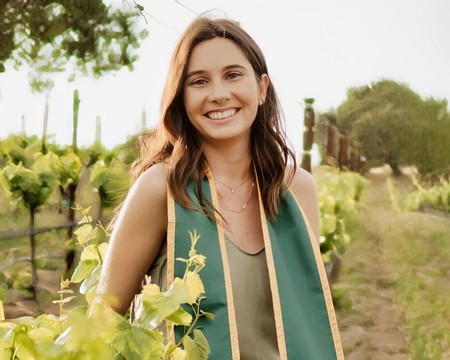
Eliana Arnaudo, Oak Ridge Winery.
That might explain the younger generation's inveterate attachment to online mediums such as VinePair, whereas older generations may find little use for it The way Arnaudo puts it: “I tune into VinePair’s flagship podcast and web site for all my wine info because they do a great job modernizing and dissecting all aspects of wine, from industry trends to serving wine at a dinner party. Their approach is upbeat, inclusive, and educational... even newbies can navigate the site.”
Another key to circumventing the wine language barrier for many young Americans is social media such as Instagram and TikTok. While self-evident, these factors cannot be overstated. The important thing, points out Arnaudo, is understanding the fact that many young consumers are "visual learners"⏤"our research begins and ends on social media, regardless of topic."
Summarizing Delgado's advisory: If you wish to reach Gen Z, you need to meet them where they're at, on the platforms they frequent, and place the products in contexts that are meaningful to them, such as oft-cited values such as diversity, climate change, sustainability, self-care and authenticity. It's not that other generations don't care about these things. It's because Generation Z prioritizes these values, even when it comes to buying or appreciating wine.
In short, it is not wine, or the language of wine, that obstructs the enthusiasm of the latest generation, it's the way it's communicated.
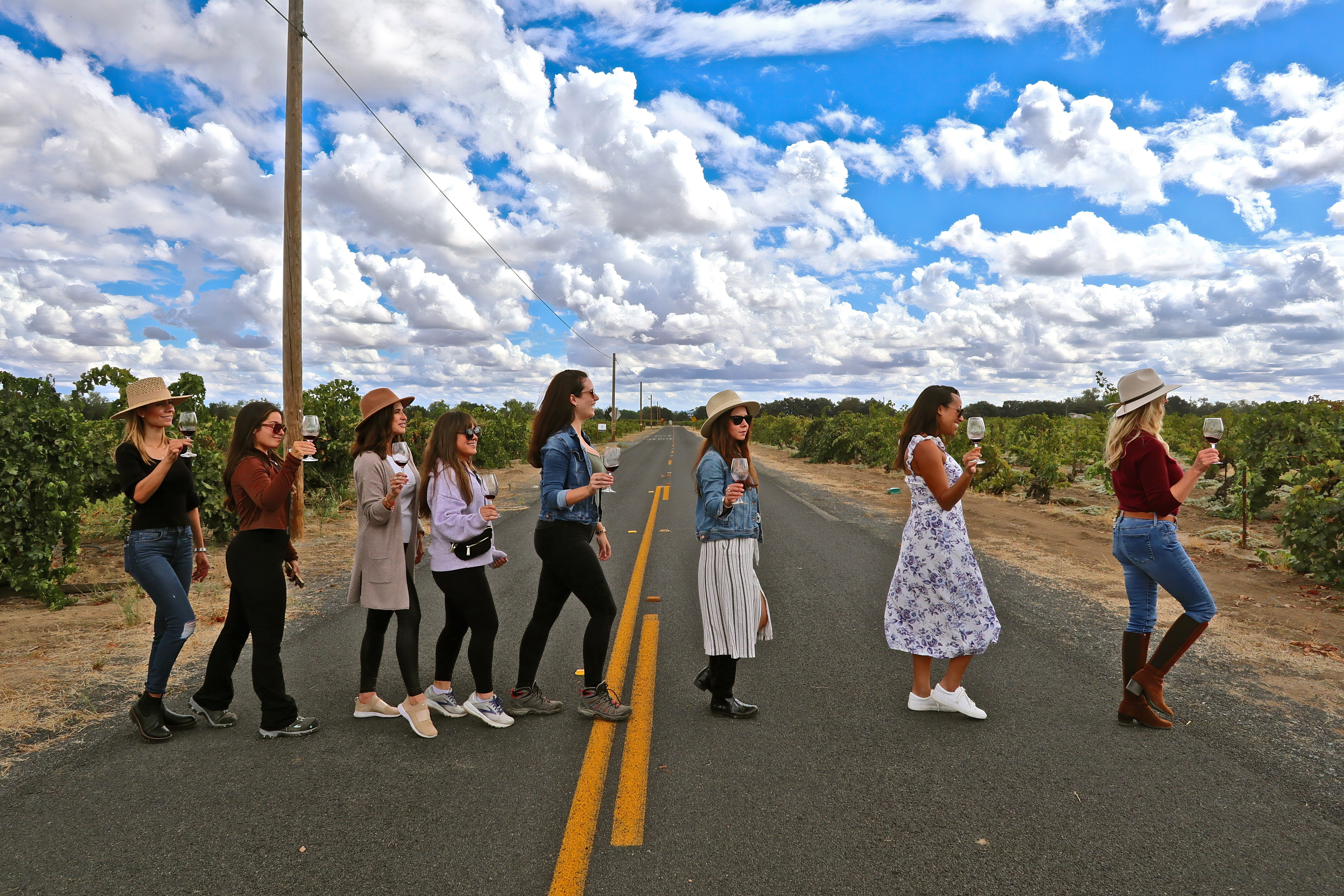
Visiting wine influencers walking across Lodi's Schmiedt Rd., an area where there are probably more vines over 100 years old than anywhere else in the state of California.